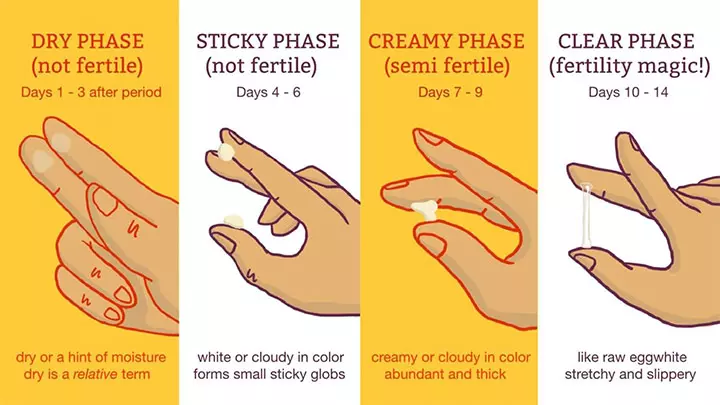

Image: Shutterstock
Are you aware of the fact that you can check your fertility on the basis of cervical mucus? We know that mucus is right on top of the list when it comes to the “ick” factor. But, trust us, if you can get past that expected initial disgust, you’ll be able to predict your fertility and ovulation in a natural and beautiful manner.

If truth be told, cervical mucus is that sign of fertility that comes prior to ovulation. This is an essential piece of information as it’s almost a little late to try and get pregnant when you already start ovulating.
Tracking signs like the basal body temperature can help you with confirming the ovulation time, but it’s the various phases of cervical mucus that lets you know when is the right time to make a baby.
How Can You Check Cervical Mucus?
Image: IStock
There are primarily three methods to examine your cervical mucus:
- Using Toilet Paper: One of the simplest ways to examine, this method involves just looking at the toilet paper once you’ve wiped that area. It might need a little bit of inspection, but it will be really hard to miss if you are ovulating. The mucus secretions might vary cycle-to-cycle depending on factors such as hydration levels, etc.
- Underwear Checks: Sometimes, women can have a gush of a secretion that might be visible on the underwear itself. This is probably a little less intimate yet accurate method to check your cervical mucus (Wearing a black one can be quite helpful!).
- Internal Check: The check can come quite naturally to you, especially if you chart your cervix too as an ovulation sign. Having said this, remember that your lady bits have a carefully-balanced pH level. And, even something as minor as soap residue might disrupt that level. So, be careful!
Note that it’s important to track these changes at the same time on a daily basis. Also, this is just one of the many tools you can utilize to help you achieve your end goal of being pregnant.
Phases Of Cervical Mucus
Image: YouTube
The above chart distinguishes different phases of cervical mucus. It is based on a regular 28-day cycle. Of course, several women might begin ovulating a little earlier than the others. This is why it becomes essential to track your cervical mucus to determine your own ovulation cycle.
Day 1-3 Post Menstrual Cycle: The initial few days immediately after your menstrual cycle is referred to as ‘dry phase’. This phase lasts till the non-fertile mucus appears. The term ‘dry’ is pretty relative since your lady bits, being a moisture-filled membrane, can never be entirely dry. Once you’ve charted this, you’ll yourself notice the difference between the ‘dry’ and ‘cervical mucus’ phase.
Day 4-6 Post Menstruation: Also known as the ‘sticky’ phase, you’ll notice small and sticky globular mucus that is white or cloudy in color. This is the non-fertile mucus that the body begins producing in this phase. Despite the way it looks, it will not support the fusion of a sperm with an egg in a manner that the more fertile cervical mucus does.
Day 7-9 Post Menstruation: Also called as the pre-ovulation phase. Though the white or cloudy-colored mucus is what you’ll still see, it will be more thick, viscous, and will not be as sticky. There are several women who attempt to get pregnant during this phase. However, if for some reason or the other, the effort isn’t fruitful, don’t be disappointed. You’re still quite a few days away from your peak ovulation phase. The sperm can stay in a woman’s reproductive organ for up to 5 days. So, there is still a possibility that you could hear the good news.
The Fertile Window: To increase the chances of you conceiving a baby, it is best to coincide your lovemaking with this phase. This is when the cervical mucus will be copious, clear, and quite stretchy. This ‘clear’ cervical mucus means that you are at your prime fertile stage now. The present environment nurtures and supports the sperms too. You’ll observe an increased amount two days or so before the ovulation period. This 12-hour window is the best time for the sperm to inseminate an egg.
Not every woman has a 28-day cycle. In fact, an average cycle can be anywhere from 21 days up to 35 days. While some women might rush through the cervical mucus phase, others might have one that lasts for two weeks. So, it is essential to know that this cervical mucus guide, though effective, is not an all-encompassing and comprehensive way to learn about your fertility. Thus, it is advisable to look out for other signs as well to understand the ovulation process!
Community Experiences
Join the conversation and become a part of our nurturing community! Share your stories, experiences, and insights to connect with fellow parents.













